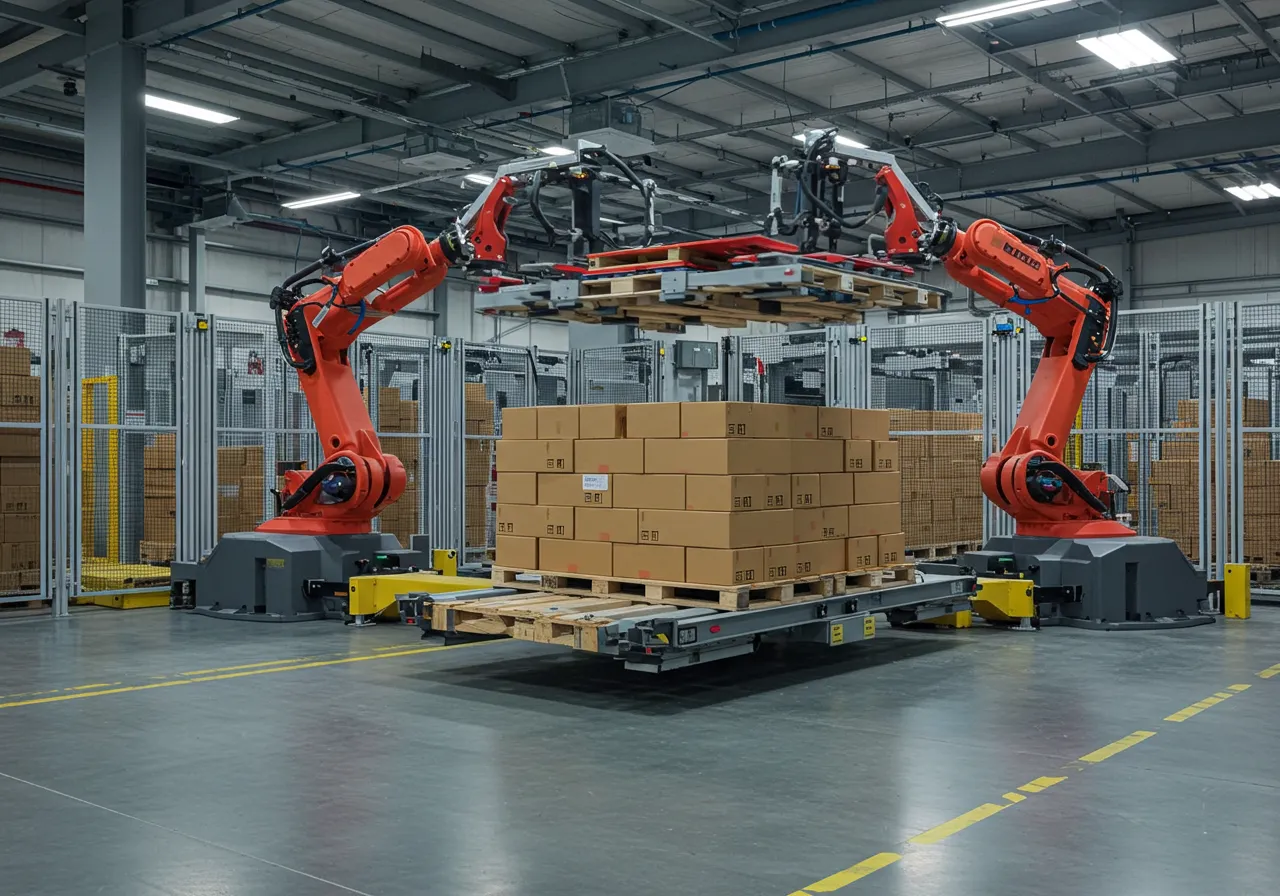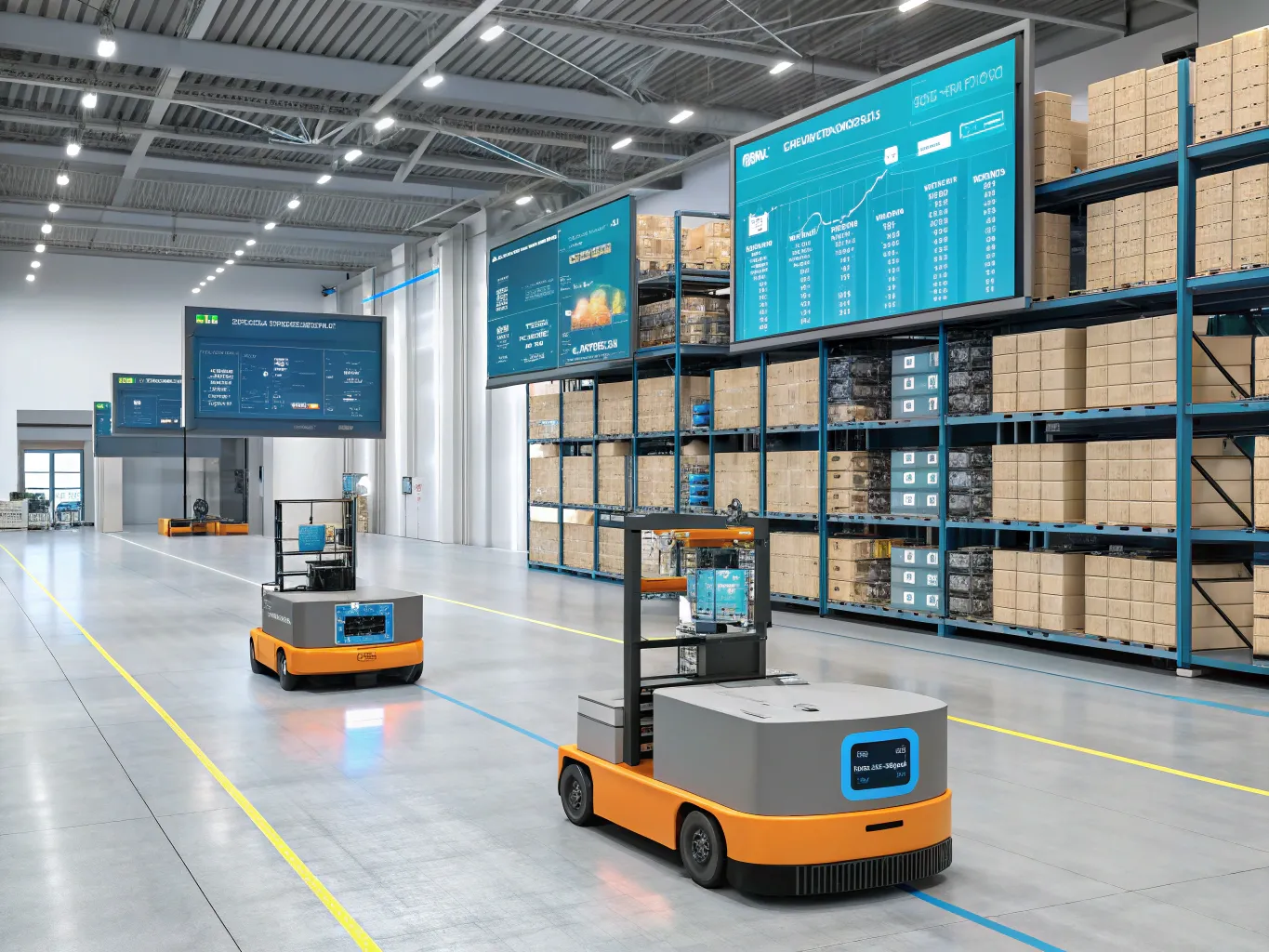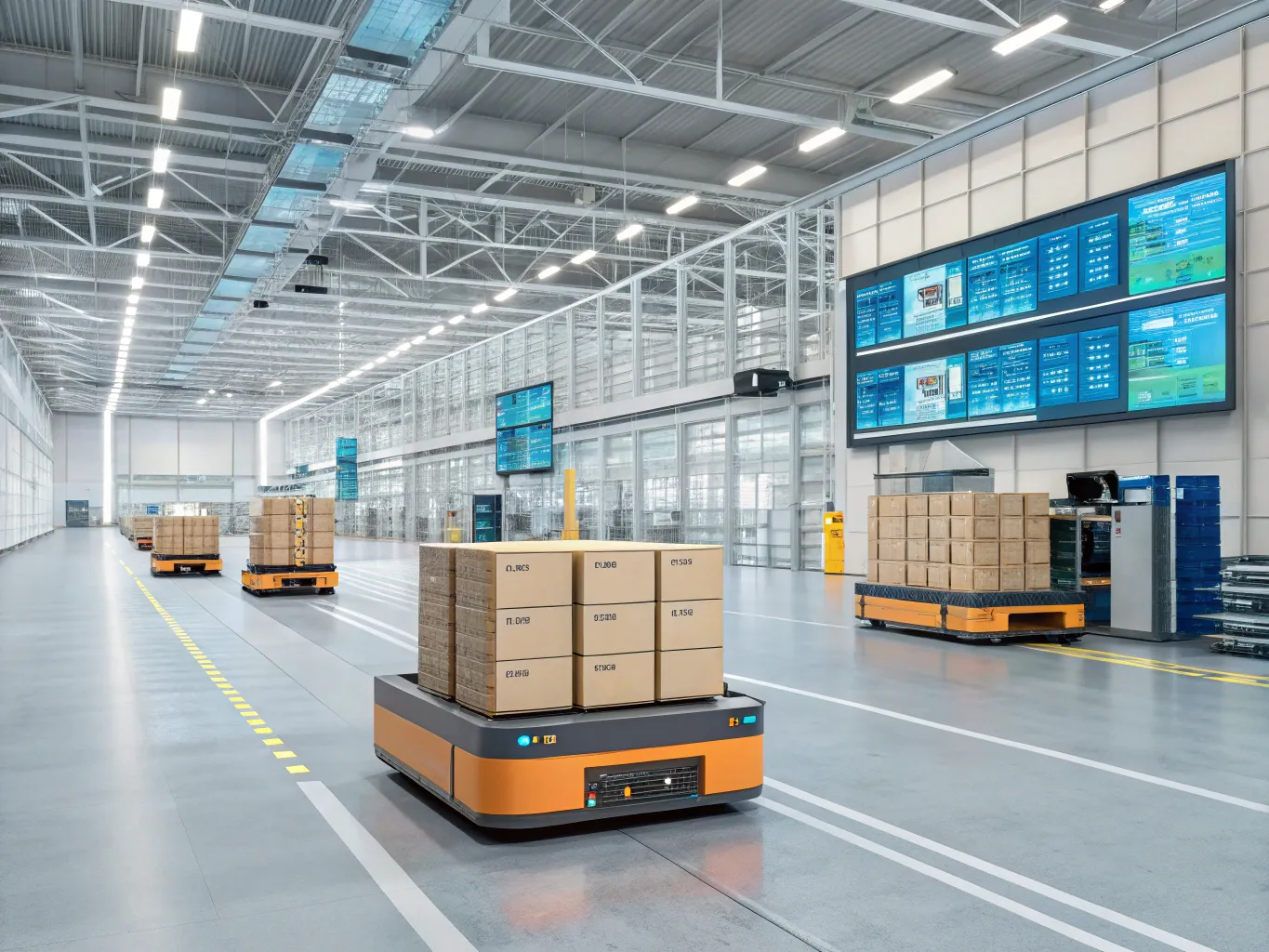
Streamline Your Supply Chain
Boost agility and accuracy with customized automation solutions designed for today’s dynamic logistics environments, reducing errors by up to 40% and cutting lead times by 30%.
Enhance Precision with Automated Logistics


Optimize Workflow Efficiency
Industries Empowered by Topic Tabs
- Retail: Streamline supply chain operations with advanced inventory management, ensuring 25% faster restocking and reducing out-of-stock incidents by 30%. Utilize demand forecasting tools to align stock levels with customer demand, leading to an enhanced shopping experience.
- Manufacturing: Implement just-in-time inventory practices to decrease holding costs by up to 40%. Enhance production schedules and minimize downtime through synchronized logistics. Achieve a synchronized supply chain that aligns raw material supply with production schedules, improving efficiency.
- Distribution: Optimize routes using real-time GPS tracking and reduce fuel consumption by 15%. Improve delivery timelines with dynamic route adjustments. Leverage cross-docking techniques to decrease handling time and boost throughput, making operations more responsive and efficient.
- E-commerce: Enhance customer satisfaction by offering precise delivery slots and increasing on-time delivery rates to 98%. Reduce cart abandonment with efficient order processing and transparent tracking. Utilize data analytics to anticipate purchasing trends and improve inventory turnover.
- Healthcare: Ensure compliance with regulatory standards by tracking pharmaceuticals and medical supplies through every step of the supply chain. Enhance patient care by reducing delivery times for critical supplies by 20% and maintaining stringent quality controls.
Core Automation Technologies in Logistics
- Robotic Process Automation: Streamline repetitive tasks such as invoice processing and order entry. By reducing manual input, companies can cut operational costs by approximately 30%, ensuring faster service delivery and minimizing human errors.
- Machine Learning: Predict demand fluctuations with 95% accuracy, enabling businesses to adjust inventory levels proactively. This reduces stockouts and overstock situations, enhancing customer satisfaction and maintaining supply chain continuity.
- Automated Data Analysis: Process vast datasets to uncover trends and insights. Logistics companies can apply these findings to optimize delivery routes, potentially reducing transit times by up to 20%, leading to improved customer service experience.
- Smart Inventory Management: Utilize IoT sensors to monitor stock levels in real-time. This system can lead to a reduction in holding costs by 15% and improve inventory turnover, ensuring products are always available when needed.
- Enhanced Tracking Systems: Implement RFID and GPS technologies to track shipments in transit with precision. This transparency enhances security and trust, providing clients with real-time updates and increasing on-time delivery rates by 25%.
Automation Capabilities
Process Automation
Automate end-to-end supply chain processes, reducing manual intervention by up to 70%. Minimize human error in tasks such as order fulfillment and tracking accuracy, resulting in a 50% decrease in processing time and enhancing overall operational reliability. Customized workflows ensure adaptability across various logistic scenarios.
Real-Time Monitoring
Gain instantaneous access to logistics data with precision tracking. Implement IoT sensors for real-time inventory levels, positioning updates, and environmental conditions. Achieve a 40% reduction in response time to disruptions, enabling swift corrective actions and improved service levels.
Advanced Analytics
Utilize predictive analytics to forecast demand trends and inventory needs, reducing surplus costs by 25%. Employ big data techniques to uncover operational inefficiencies, allowing for strategic adjustments that enhance decision-making and drive competitive advantages in supply chain management.
Logistics Optimization
Optimize fleet management through AI-powered route planning, achieving a 20% reduction in fuel consumption. Implement adaptive scheduling to ensure punctual deliveries and boost customer satisfaction rates by 15%. Smart automation solutions streamline logistics, elevating efficiency and reducing overhead.
Empower Smart Logistics Decisions

Transformative Automation Benefits
- Cost Reduction: Achieve up to 30% savings by minimizing manual errors and optimizing resource allocation. Automated scheduling reduces overtime expenses and optimizes fleet use, lowering fuel costs significantly.
- Increased Productivity: Experience a 40% boost in output by automating routine tasks such as order entry and shipment tracking, allowing employees to focus on value-added activities. This enhances throughput and accelerates project timelines.
- Faster Response Times: Reduce customer response times by 50% with real-time data analytics and automated notifications. Instant access to updated inventory levels and shipment statuses allows for rapid decision-making and improved customer satisfaction.
- Improved Accuracy: Enhance data precision in inventory management by 35% through automated stock level updates and error-checking algorithms. This reduces stockouts and excess inventory, leading to a more reliable supply chain.
- Scalability: Seamlessly expand operations with automated systems that adapt to growing demands without additional manual labor. Dynamic scaling capabilities ensure consistent service levels during peak periods, such as holiday seasons.
How Automation Elevates Operational Efficiency
Enhance Operational Precision with Automation
You may also be interested in
Maximize your potential with our seamless, end-to-end supply chain solutions.

Global Transportation & Distribution Optimization
Enhance your logistics operations with precision-engineered transport solutions. Benefit from a 20% reduction in transit time and achieve seamless distribution across 120 countries, ensuring your supply chain remains resilient and agile.

Data Analytics & Reporting
Harness predictive analytics to streamline logistics, reduce lead times by up to 30%, and optimize inventory levels, driving smarter supply chain decisions.

Inventory Buffer Strategies
Harness strategic inventory buffers to mitigate supply chain disruptions, reduce lead times, and improve service levels. Elevate your operation's adaptability and meet fluctuating demands seamlessly with precision stock management.